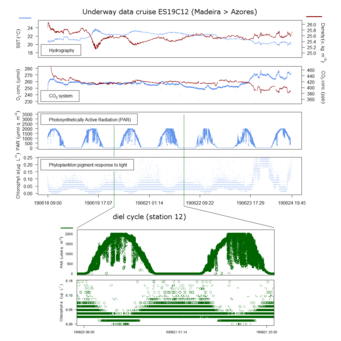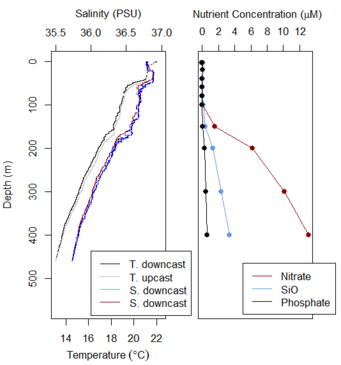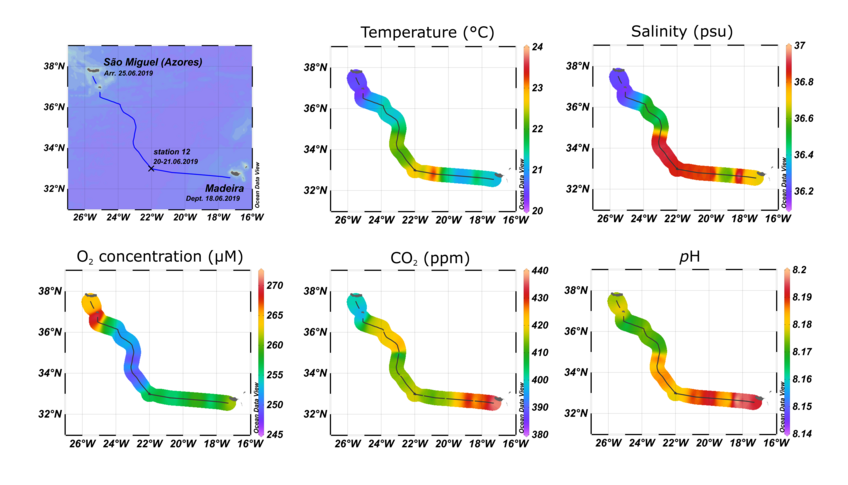
Preliminary Data
Continuous sensor measurements
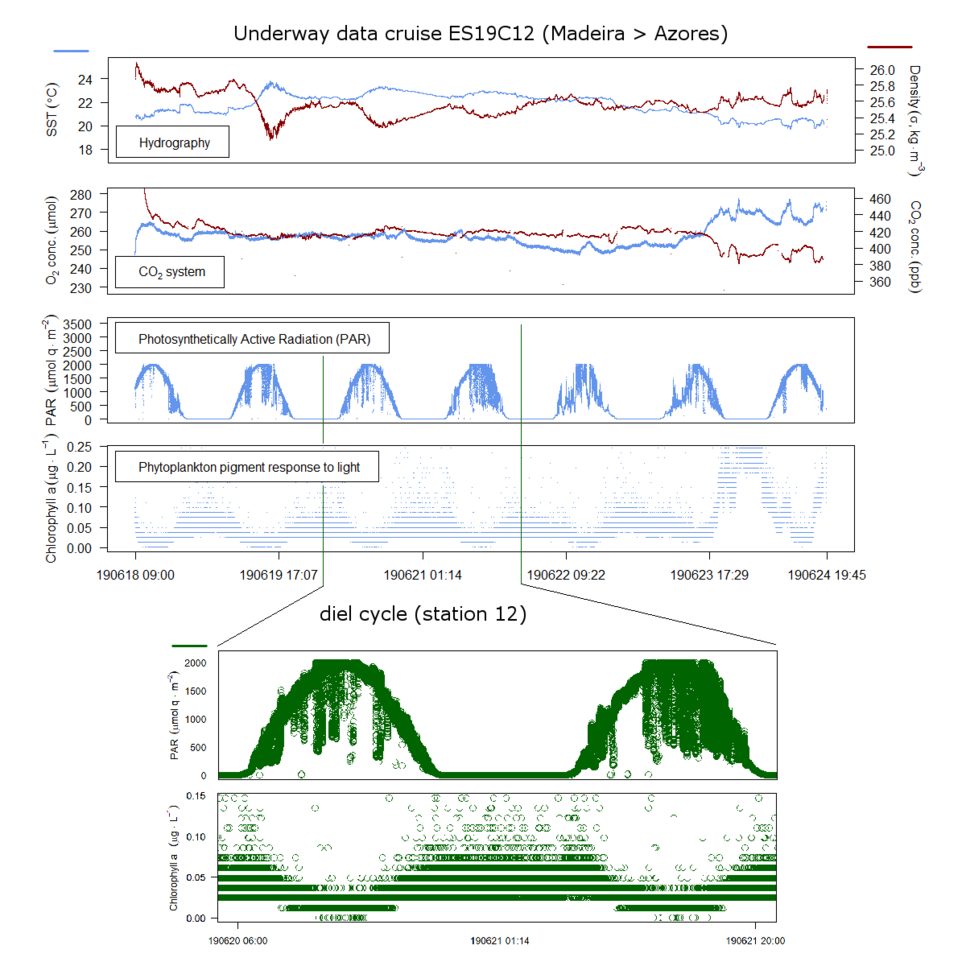
Underway sensor data from water collected from the keel of S/Y Eugen Seibold (~3 m depth) between Madeira and the Azores during cruise ES19C12. The top figure shows the cruise track on a map and corresponding to that the data as gridded colour fields: temperature and salinity on the top row, and three interacting properties of the ocean CO2 system in the bottom row: oxygen concentration, partial pressure of carbon dioxide and the pH of the seawater.
The image to the left shows sensor information over time, again starting with hydrographical properties: potential temperature and density, followed by the CO2 system again: oxygen and carbon dioxide concentrations. Then follows photosynthetically active radiation (PAR), which is the part of sunlight thay can be used for photosynthesis by microorganisms in the ocean surface. A sensor on top of S/Y Eugen Seibold's mast collects this information. Finally we show a related water-bourne measurement: the fluorescence of photosynthetic pigments (specifically, chlorophyll a) in said microorganisms. Both parameters can be seen to vary in a diurnal pattern - during the high light intensities in the daytime, chlorophyll a fluorescense is suppressed by photoprotective processes. This diel interplay is expanded for the duration of stay at station 12, lasting for about a day and a half.
Discrete measurements at station
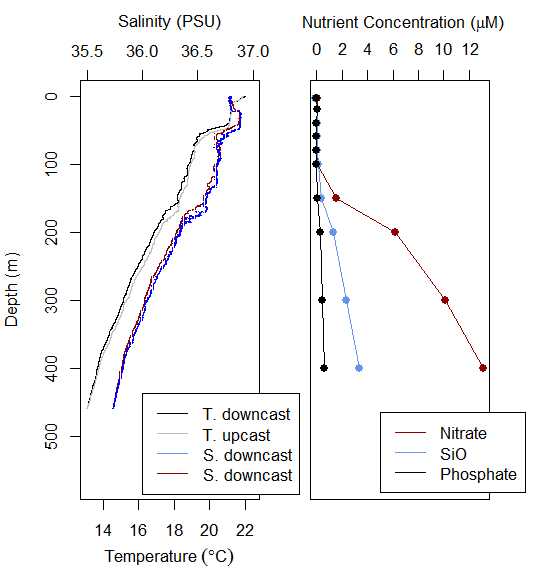
At station 12, a number of casts with our rosette sampler were performed, which contains a sensor system called a CTD (conductivity, temperature, depth), traditionally holding the eponymous three sensors, sometimes augmented with others. Here we show depth profiles of hydrographic sensor information for this station 12, as well as nutrient measurements performed on the water samples taken at this location.
From these profiles we can clearly see two thermoclines: temperature boundaries between water layers, which are also reflected in the the salinity. Both the upward as the downward path of the sampler and sensor is shown, with excellent agreement. Nutrient data clearly shows the depletion of nutrients in the upper photic layer of the ocean surface, due to the uptake by phytoplankton during blooming.
